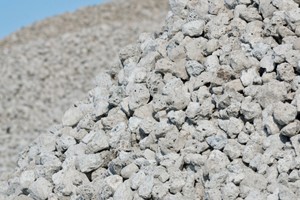Steel slag, a byproduct of the steel industry, has emerged as a valuable resource for the concrete and cement sector. Its incorporation into cement and concrete production has proven to significantly reduce carbon emissions. By replacing a portion of clinker, the primary source of carbon emissions in cement, steel slag offers a sustainable solution for the construction industry.
The Benefits of Steel Slag
The use of steel slag in cement and concrete offers several advantages beyond carbon reduction:
- Reduced Heat of Hydration: This property helps prevent cracking in concrete structures.
- Increased Strength: Steel slag concrete gains strength over time, leading to higher ultimate strengths.
- Improved Durability: It enhances resistance to alkali-silica reactivity and chemically aggressive environments, extending the lifespan of structures.
- Lower Maintenance Costs: Due to its durability, steel slag concrete requires less maintenance throughout its lifetime.
The Challenge of Steel Slag Availability
While steel slag offers a promising solution for carbon reduction, its availability is subject to the evolving landscape of the steel industry. As the steel industry transitions towards more sustainable practices, the production of steel slag may decrease. This reduction in supply could limit the potential of steel slag as a carbon-reducing agent in the construction sector.
Exploring Alternatives
In anticipation of reduced steel slag availability, the concrete and cement industry is actively exploring alternative materials. Ground limestone and calcined clays are emerging as viable options to replace clinker and reduce carbon emissions. These materials are more widely available and can contribute to the overall goal of reducing the clinker binder ratio.
The Future of Carbon Reduction in the Construction Industry
While steel slag remains an important component in reducing carbon emissions in cement and concrete production, its availability may be constrained in the future. The industry is actively working to identify and implement alternative solutions to ensure continued progress towards carbon reduction. By diversifying the range of materials used and optimizing production processes, the construction sector can play a vital role in mitigating climate change.













